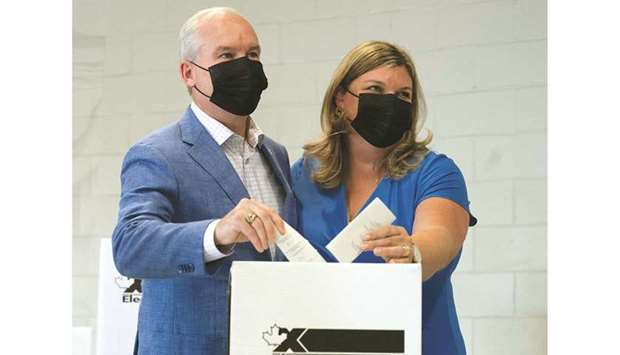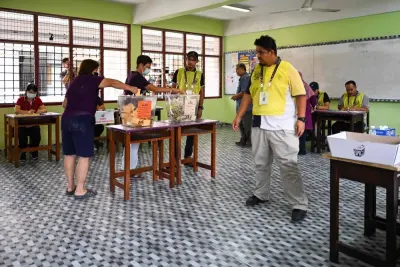Voting began yesterday in Canada’s national election, with surveys showing Prime Minister Justin Trudeau’s Liberals in a very tight race against rookie conservative leader Erin O’Toole.
Polls opened at 1100 GMT in the Atlantic island province of Newfoundland, the first of the country’s six time zones.
Trudeau may cling to power after the dust has settled on the election, but he is likely to lose his bid for a parliamentary majority after a tough campaign that dashed his ruling Liberals’ hopes for a convincing win.
He heads a minority government that relies on the support of other parties to pass legislation.
With opinion polls last month showing him far ahead of his rivals, the Liberal leader triggered the vote two years earlier than necessary, saying that voters needed to weigh in on his left-of-centre Liberal government’s handling of the coronavirus (Covid-19) pandemic.
However, as the public’s unhappiness about the early call grew, the 49-year-old prime minister saw his lead evaporate.
Liberal strategists now concede it will be hard for the party to win a majority of the 338 seats in the House of Commons.
In recent days, Trudeau, whose government racked up record debt fighting Covid-19, focused on the need for Canadians to get vaccinated against the coronavirus.
He backs vaccine mandates, while Conservative leader Erin O’Toole, 48, opposes the mandates and prefers a combination of voluntary vaccinations and rapid testing to stop the spread of the virus.
“We need clear, strong leadership that is going to continue to unequivocally push vaccines, and that’s what we will do. Mr O’Toole, he can’t, and he won’t,” Trudeau told supporters in Niagara Falls, Ontario, on Sunday during a frantic last day that saw him travel 2,800 miles (4,500km) across Canada.
If Trudeau does fall short of a majority, it would represent a defeat that is certain to raise questions about his political future.
Trudeau, a charismatic progressive and son of former Liberal prime minister Pierre Trudeau, swept to power in 2015.
However, the Liberals were reduced to a minority in 2019 after Trudeau was damaged by allegations of intervening in a criminal case involving a corporation in Quebec and by revelations that he had worn blackface as a younger man.
Echoes of that campaign reverberated on Sunday when a new photograph of Trudeau wearing dark make-up at the same 2001 party emerged.
A Liberal campaign official said the latest photo was a desperate attempt to smear Trudeau on the eve of the vote.
Trudeau apologised in 2019 for having worn blackface.
Polls show the Liberals tied in popular support with the Conservatives, which theoretically gives Trudeau’s party an advantage, since Liberal strength tends to coalesce in urban centres home to the lion’s share of seats.
“There’s no world in which this is not tight,” a senior Liberal strategist said. “Is a majority possible? Yes. Is it the likeliest scenario? No.”
Liberals concede voters might be turned off by having to go to the polls as a new Covid-19 wave hits the country.
Low turnout tends to favour the Conservatives.
To complicate matters, both parties face the risk of vote splits.
The Liberals compete with the left-leaning New Democrats, while the right-wing People’s Party of Canada (PPC), who oppose mandatory vaccines, could hurt the Conservatives.
“Justin Trudeau wants you to stay home tomorrow. Justin Trudeau wants you to vote PPC,” O’Toole told supporters on Sunday.
O’Toole voted in Bowmanville, Ontario yesterday, and Trudeau cast his ballot in Montreal.
An estimated 27mn Canadians are eligible to vote to select 338 members of Parliament.
To keep his job, Trudeau’s Liberals must win a plurality of seats and take at least 170 for a majority.
Elections Canada, which is overseeing the vote, has so far received nearly 800,000 mail-in votes from within Canada, up sharply from the 50,000 total mail-in votes received in 2019.

Canadian Prime Minister and Liberal Party leader Trudeau waits to cast his vote with his family at a polling station in Montreal.


